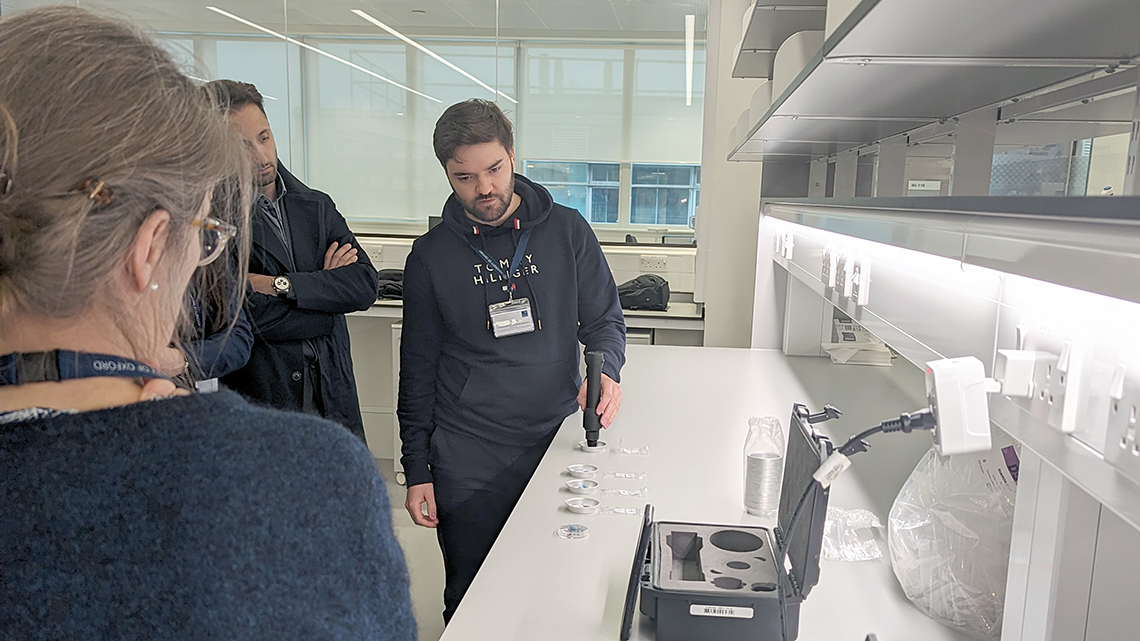Dashboard on portable devices for medicine quality screening
Dashboard on portable devices for medicine quality screening
Portable devices offer the potential for a rapid detection of substandard and falsified medicinal products in the ‘field’. Currently both the number of such devices and of the scientific literature describing them, is growing. However, identifying, accessing and comparing key publications and information remains a challenge for stakeholders, such as Medicine Regulatory Authorities in low- and middle-income countries, wishing to implement screening devices in their supply chains. Therefore, the aim of the 'Dashboard on portable devices for medicine quality screening project' is to provide an interactive digital tool making the available evidence accessible, understandable and meaningful.

‘Prevent, detect and respond’ are the three pillars of the World Health Organization (WHO) strategy to fight against harmful substandard and falsified (SF) medical products. However, the detection of these products remains a challenge in many low-resource settings. Personal of Medicine Regulatory Authorities in low- and middle-income countries currently often have to rely only on their observations and knowledge as they monitor the medicines available in their supply chains.
Hope is therefore pinned on portable screening technologies, which offer the potential for a more objective analysis of medicines in the ‘field’. Indeed, over the last three decades a plethora of such portable tools have been developed. A systematic review of the scientific literature published in 2018 by the Medicine Quality Research Group (MQRG) at the Oxford University revealed that 41 portable devices had been tested to understand their performance and characteristics for identifying SF medicines in 62 articles. The review also highlighted that there is no ‘magic bullet’ device to cover all the finished pharmaceutical products and formulations available on the market. The articles included in the review showed quite heterogeneous methods used to test devices performances, and gaps of scientific evidence on the technical abilities of most of the devices.
In the same year of 2018 Roth et al. published their findings (Global landscape assessment of screening technologies for medicine quality assurance) after having interviewed stakeholders, mainly regulators, from ten countries in all WHO regions except Europe on the use of screening technologies. All participants described a lack of objective and accessible information on field screening technologies, especially on their capabilities and operational characteristics such as training requirements or access to in-country maintenance.
Since the review was published in 2018 and until the end of 2022, the MQRG identified 75 new research papers, among which 19 describe newly developed or improved versions of existing devices. In addition, a market analysis paper predicts a 1.5-fold expansion of the demand for falsified medicines detection devices in 2022-2029, for a market that was valued at USD 1.14 billion in 2022.
It can therefore be expected that a mushrooming number of portable screening devices will reach an expanding market, and a growing number of scientific studies will be published. Due to the nature of those researches and the wide diversity of groups working on this, decision-makers will struggle to identify and analyse essential publications, and to translate these data into policy. Tools to easily and reliably access and understand the available evidence, are thus critical.
The overall goal of the Dashboard on portable devices for medicine quality screening project is therefore to provide such an interactive, digital tool. To meet the needs of regulators and decision makers from low- and middle-income countries, their input plays a crucial role in all steps of the development and design of this dashboard. Their replies to a questionnaire served as a basis to build a prototype of this digital tool. This prototype evolved though rounds of feedback and improvement during a multi-day-workshop to which regulators, researchers and other stakeholders were invited to participate in Oxford in April 2024, and later.
Additionally, an update of the systematic review published in 2018 is continuing and the data collected for this will be used to feed into the digital tool.
We are very grateful for the funding for this work from the Bill & Melinda Gates Foundation.

Field detection devices for screening the quality of medicines: a systematic review. BMJ Global Health 2018
Global landscape assessment of screening technologies for medicine quality assurance: stakeholder perceptions and practices from ten countries. Global Health 2018
Counterfeit Drug Detection Device Market is estimated value of around US$ 1.14 Billion as of 2022. PharmiWeb.com



